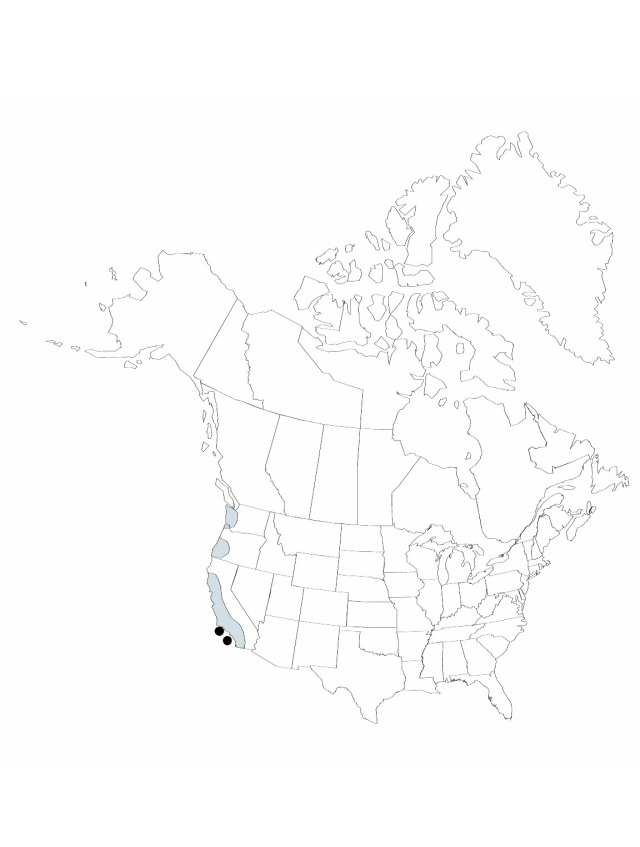Juncus phaeocephalus
2:484. 1868.
Herbs, perennial, rhizomatous, 2–9 dm. Rhizomes 2–3 mm diam. Culms erect, 2–5 mm diam. Cataphylls 2, chestnut brown, apex acute. Leaves: basal 2, cauline 1–2, light green; auricles absent; blade 1–15 cm × 2–5 mm. Inflorescences panicles of (2–)10–77 heads, 2–9.5 cm with ascending to erect branches, or heads solitary; primary bract erect; heads 3–35-flowered, spheric to obovoid, 0.5–1.2 mm diam. Flowers: tepals dark brown to purplish brown, lanceolate, 3.3–4.8 mm, nearly equal; outer tepals acuminate, mucro subulate; inner tepals acuminate or cuspidate, mucro subulate; stamens 6, anthers 2–3 times length of filaments. Capsules included, chestnut brown or straw-colored, 1-locular, oblong, 3.8–5.6 mm (including beak), apex acute proximal to beak, beak slightly exserted. Seeds obovoid, 0.5–0.6 mm, not tailed.
Phenology: Fruiting summer.
Habitat: Meadows and borders of swamps
Elevation: 100–300 m
Distribution

Calif., Oreg., Wash., Mexico (Baja California).
Discussion
Plants with more than 10 heads of 3–12 flowers have been separated as Juncus phaeocephalus var. paniculatus Engelmann. This variety is very similar to the neext species (Juncus macrandrus) and is probably better treated as part of that species. Until a more thorough study has been made of the entire subgenus, we are hesitant to make such a transfer.
Selected References
None.